Soon, extremely soon, I’m going to tell you more about our 12 days in Andalucía but before that, before summer is truly over, before I start thinking about cooking more complex meals again, before I even consider turning on the oven again, I wanted to tell you that this summer was the year I finally figured out how to make cacio e pepe, one of my favorite pastas, as good at you’d have in Rome, and we cannot let the summer end until you do too.
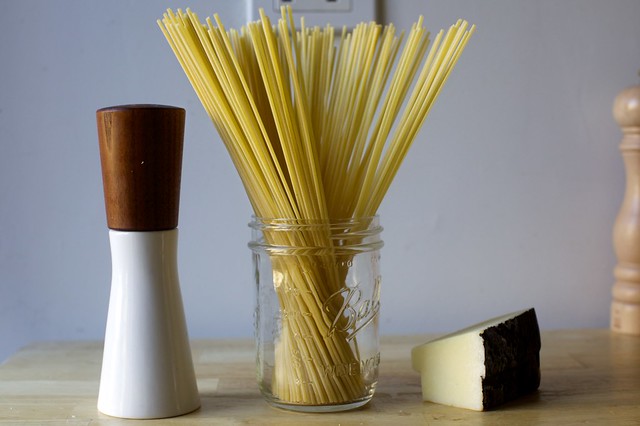
Huh? Deb, you wrote about it years ago, in 2011. But the recipe always bothered me, and the reason is written out right in it: authentic cacio e pepe contains only three sauce ingredients: pecorino romano (this is the cacio, the cheese), black pepper (this is the pepe, ground to your desired texture, often toasted first if you’re going for extra flavor), and pasta, plus splashes of the pasta’s hot starchy cooking water to form a sauce. It doesn’t contain oil, butter, cream, flour, cornstarch or any other binders. The trouble begins when you try to merge/coalesce/magic together water and cheese into an emulsified, creamy sauce. Ever tried to mix oil and water? In my kitchen, it goes about as well as you might imagine.

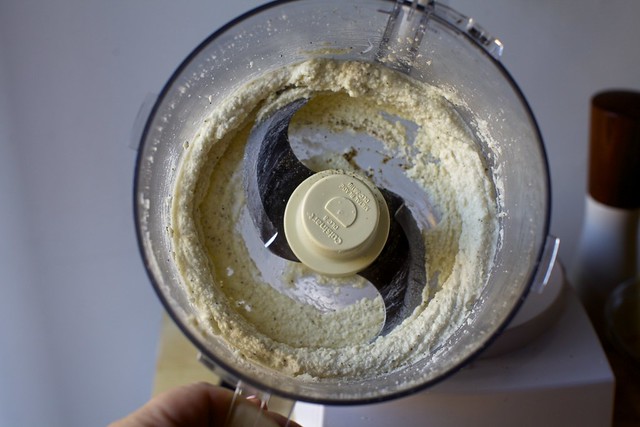
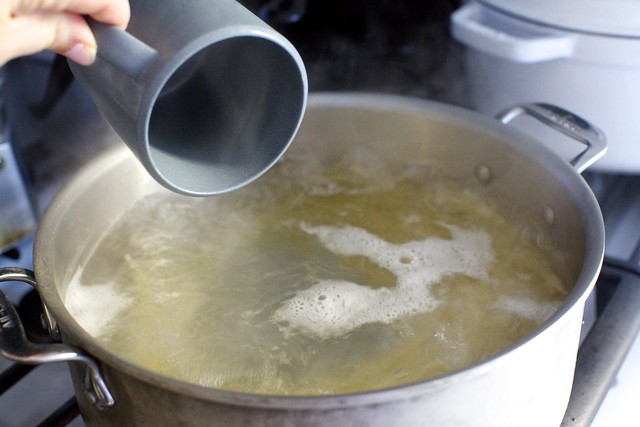
Frustrated in 2011, I added a little cream and butter* to make it work. But I never “finished” the recipe in my mind. Since then, I have tried — this is barely an understatement — every single 3-ingredient technique on the internet and in cookbooks I could track down, I have watched videos completely in Italian to try to glom how they do it, walked into the kitchen, repeated their exact steps, and failed every time. I try about 6 times a year. It’s been 7 years. I never, ever succeed in magic-ing pasta water and cheese into a smooth sauce. The cheese melts before it glues itself to the noodles, cementing itself instead to the pot, the bowl, the tongs, the stuff of dishwashing dread. I imagine this sounds familiar to others.
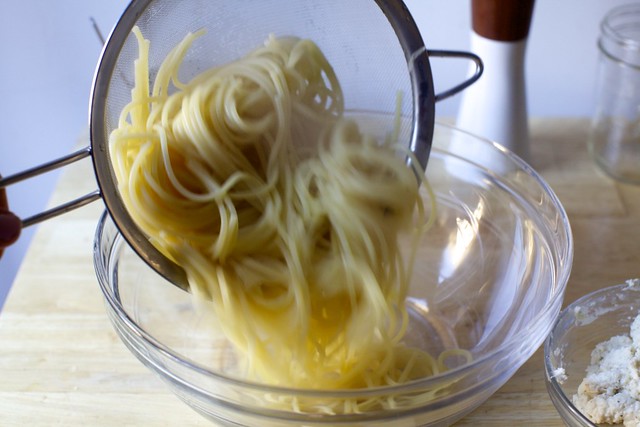
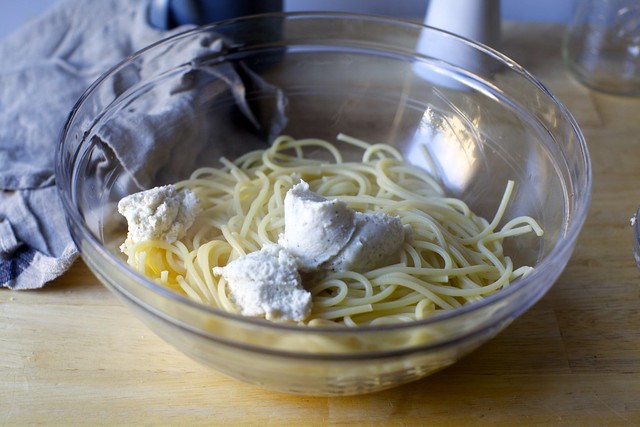
When someone emailed me (hi, Annie!) earlier this summer and told me about Flavio de Maio’s (of the restaurant Flavio Velavevodetto in Rome) method as shared by tour guide and Roman cooking expert Elizabeth Minchilli on her site, I was fresh off my latest cacio flop and thanked her, but expressed my doubt that this would be This One. That was 2:12pm. At 6:12pm, I sent her a photo of our dinner and told her she’d changed my life, and I hope yours, possibly in the next 20 minutes.
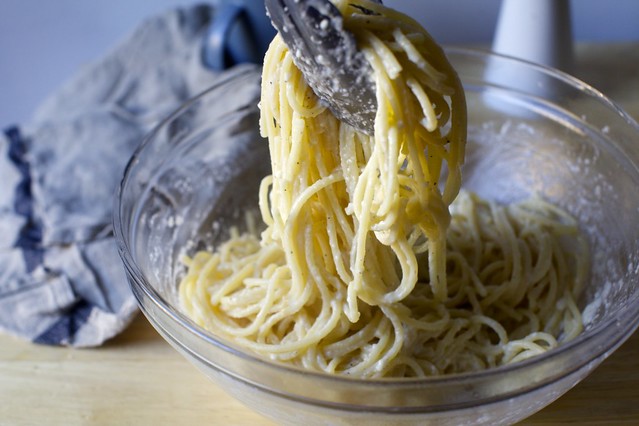
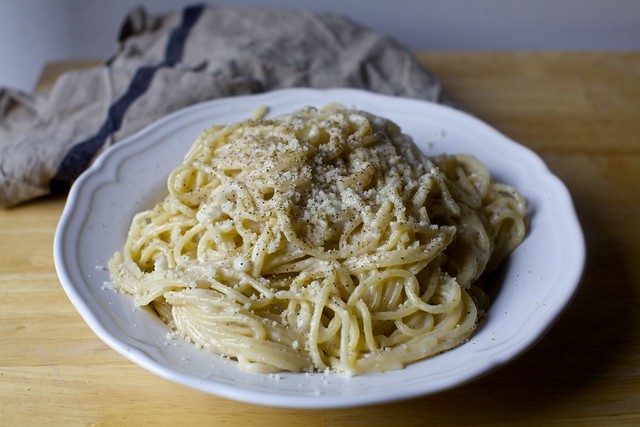
* it was good enough for Batali, so it was good enough for me, I rationalized in 2011; what different times those were
I wrote a thing: I wrote an Op-Ed for the New York Times about a favorite subject — cooking and why it’s terrible and you should never do it. Here’s the link. I hope you read, uh, to the end.
Previously
One year ago: Corn Chowder with Chile, Lime and Cotija
Two years ago: Burrata with Lentils and Basil Vinaigrette and Eggplant Parmesan Melts and Even More Perfect Blueberry Muffins
Three years ago: Angel Hair Pasta with Raw Tomato Sauce and Crispy Peach Cobbler
Four years ago: Smoky Eggplant Dip and Strawberries and Cream with Graham Crumbles
Five years ago: Rice-Stuffed Tomatoes and Almond-Crisped Peaches and Key Lime Popsicles
Six years ago: Mediterranean Baked Feta with Tomatoes and Leek, Chard, and Corn Flatbread
Seven years ago: Zucchini Fritters and Naked Tomato Sauce
Eight years ago: Sweet Corn Pancakes, Eggplant Salad Toasts and Perfect Blueberry Muffins
Nine years ago: Plum Kuchen, Lighter, Airy Pound Cake, Summer Pea and Roasted Red Pepper Pasta Salad and Lobster Rolls
Ten years ago: How to Poach an Egg, Smitten Kitchen-Style, Chocolate Peanut Butter Cake, and Slow-Roasted Tomatoes
Eleven years ago: Double Chocolate Torte and Spicy Soba Noodles with Shiitakes
And for the other side of the world:
Six Months Ago: Quick, Essential Stovetop Mac-and-Cheese
1.5 Years Ago: Tomato-Glazed Meatloaves with Brown Butter Mashed Potatoes and Pomegranate Grapefruit Paloma
2.5 Years Ago: Belgian Brownie Cakelets and Broccoli Melts
3.5 Years Ago: Pecan Sticky Buns and Perfect Corn Muffins
4.5 Years Ago: Stuck-Pot Rice with Lentils and Yogurt and Dijon and Cognac Beef Stew
Foolproof Cacio e Pepe
Check out Elizabeth Minchilli’s site for a video of Flavio making it himself with an immersion blender.
The traditional pasta used for cacio e pepe is tonnarelli, sometimes sold as spaghetti alla chittara, a squared-off, slightly thicker spaghetti, but you use what you can get. I’m using standard thickness spaghetti here. The traditional cheese used for cacio e pepe is pecorino romano, a sharp, salty aged sheep’s milk cheese. If you can only get parmesan, it works too, but you’ll probably need to add salt to the sauce. While the recipe below works as written, you’ll probably want to make adjustments to taste, and to the intensity, age, and saltiness of your cheese.
- 8 ounces dried spaghetti or tonnarelli (see note at end)
- 4 ounces aged pecorino romano, finely grated (see note at end
- A lot of freshly ground black pepper
While it’s cooking, combine all the pecorino (except a spoonful for garnish) and lots of freshly ground black pepper in a bowl. Add 1 tablespoon cold water and use an immersion blender to work it into a paste, adding additional cold water, 1 tablespoon at a time, only as needed. You want to form the mixture into a paste about the thickness of cream cheese or frosting. I use about 4 to 5 tablespoons total for this amount. Blend more than you think is needed; you want this paste as smooth as you can get it. You can do this same process in a food processor, even grinding the cheese in it instead of grating it first but it will require longer processing to get the rubble-like cheese smooth.
Before the pasta is done, scoop out a cup of hot cooking water and set it aside. Drain the pasta very quickly in a colander (no need to shake every drop of water off) and immediately drop it, piping hot, into a large bowl. Add 3/4 of cheese-pepper paste in dollops and toss to combine. It’s going to be too thick to form a sauce but once it has begun to coat the noodles, pour in one small ladleful of pasta water and toss, toss, toss (a lot of movement helps here) to loosen the paste into a lightly creamy consistency that evenly coats the spaghetti strands. Taste and add more of the cheese-pepper paste to taste, or use it all. Add more pasta water as needed only to loosen.
Finish with reserved pecorino and a few grinds of black pepper. Eat immediately.
Source: http://feedproxy.google.com/~r/smittenkitchen/~3/4Ddhag5OydI/